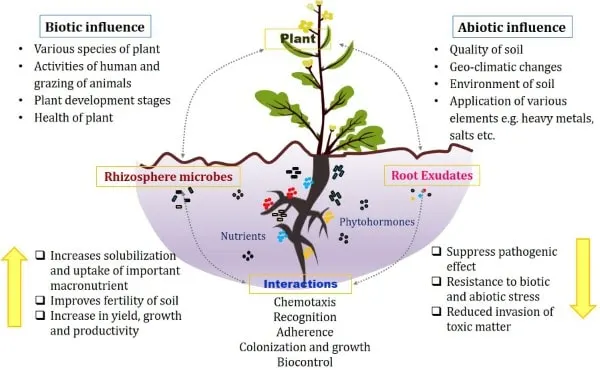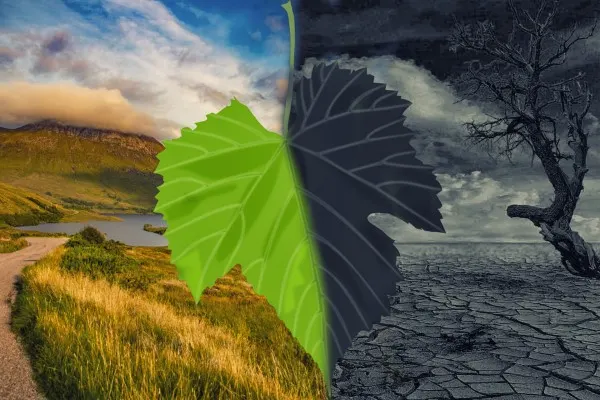Why do we need plants? Because plants and humans have a complex relationship that extends far back into our joint history of evolution. Even today, plants remain central to our well-being, not only as a food source but also as a primary component of our medicines, religions, and cultures.
This is evident in how beautiful curves of tendrils inpire artists or in the simple fact that indigenous forest societies still collect plant materials for religious practices and medicinal use. With that in mind, we’ve decided to create a detailed guide on six main reasons we need plants in our daily lives.

Why Do We Need Plants?
Trees Create Oxygen
The amazon rainforest is referred to as Earth’s green lung, and for a good reason.
You see, plants, like people, require food to survive. That said, they just can’t run down to a shop and get the ingredients they need to prepare a sandwich for their lunch. They’re producers, which implies that they have to make their own food through a process called photosynthesis.
Photosynthesis actually implies “making things from light,” synthesis meaning “to make,” and photo meaning light.
What’s more? For photosynthesis to occur, plants need three primary ingredients: sunlight, carbon dioxide, and water. Plants take in the water they need using their roots in the soil and use tiny holes in their leaves to take in the carbon dioxide gas from the air. Once they have these two, plants then use sunlight to produce their own food.
Unlike humans, who breathe in oxygen and breath out carbon dioxide, plants “breath out” oxygen after taking in carbon dioxide. They still release this oxygen back into the air through their leaves. Considering approx. two-thirds of the human body consists of oxygen, this is pretty great news for us all.
Without oxygen, it’d be game over for humans, and since photosynthesis is credited as the biggest creator of O2, taking good care of plants should be our priority. This brings me to my next point.
Plants Help Us Fight Climate Change
A significant factor affecting climate change and global warming is the level of carbon dioxide in our atmosphere. CO2 is a greenhouse gas, meaning it has heat-trapping properties. This further implies that the excessive levels of CO2 in our rapidly warming planet are trapping even more heat in our atmosphere.
Now, as we’ve already established above, growing trees absorb CO2 from the atmosphere through a process called photosynthesis and give back oxygen molecules. For this reason, plants also act as a huge filter in the atmosphere.
That said, once a tree has fully grown, it starts taking in less CO2, as it doesn’t need to create as much new wood, and that’s where responsible woodland management comes into play. With proper care, we can carefully harvest these older trees to absorb the max amount of carbon and create a carbon sink.
Trees Help Combat Noise Pollution
In addition to combating air pollution, plants and trees also minimize the effects of noise pollution. A main effect of industrialization, transport, and urbanization, noises aren’t just annoying for us humans. They can have devastating impacts on wildlife as well.
How, you ask? Well, because noise caused by human projects not only interferes with animals’ navigation and sonar system, it also disrupts the whole ecosystems. For instance, several breeds of nesting birds won’t nest in environments with noise because they find them undesirable.
With that in mind, if you find the noise coming from the nearby town too distracting, simply plant more trees around your home. The leaves of trees boast a muffling effect that diminishes the levels of sound that cross it.
Not Forgetting Light Pollution
In addition to a tree’s muffling sound, their leaves also create a barrier against any unwanted light pollution. Just like noise, city lights are annoying and can disrupt our quality of life, as well as the habits of animals like moths and birds (and even nocturnal animals like badgers)
Nocturnal animals are those that require daily light and darkness cycles to regulate their internal clocks, navigation systems, and ability to source food.
A great way to minimize the effects of pollution is to plant new trees.
Trees Are A Food Source
If sustainably grown, plants and trees are a great source of lots of vital foodstuffs. It’s a well-known fact that everyone in the world would have sufficient to eat if we all decided to abide by a vegan diet.
From the spices created by aromatic barks (like cinnamon) and syrups made from resins and flowers to nuts and fruits, we can get myriads of nutrients from plants alone.
And hey, firewoods provided by dried-up plants also provide us a way to prepare meals we would otherwise not be able to digest.
Plants Help Prevent Soil Erosion
Regions that are severely deforested are the most vulnerable to desertification. A more straightforward way to form a natural barrier to these floods and winds is to plant trees that can use their foliage and trunks as barriers.
These barriers will slow down the forces of nature and help prevent simply bad weather patterns from exacerbating to natural disasters with the ability to devastate huge areas.
Plant roots also perform the crucial function of holding soils together, stopping them from eroding. In areas that have been deforested, nothing keeps the grounds in place or slows the speed of monsoons and incoming winds.
This implies that periods of rain and high winds are then free to sweep away any loose soil they find and transform the areas into quasi deserts.
Final Thoughts
Do you now understand why we need plants? Do you see the many reasons having them on Earth is incredible? If yes, then why not help save our trees.
You can do this by working to reduce our carbon emissions, combating deforestation, contributing to reforestation movements, and spreading awareness on the best ways to source wooden goods, paper, and even food sustainably.
Small changes like these make a huge difference.

